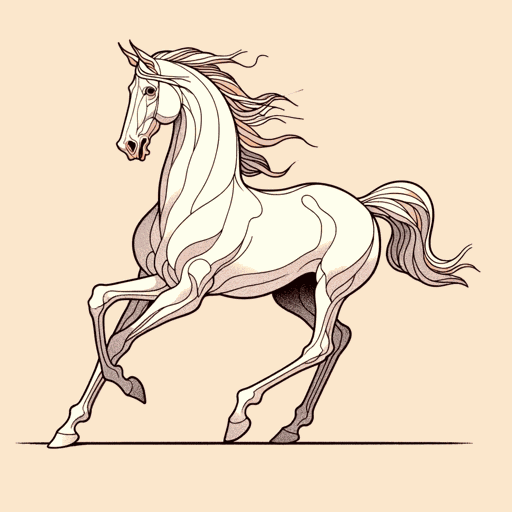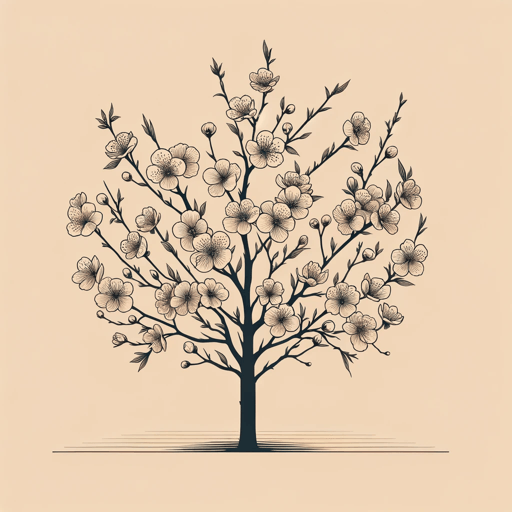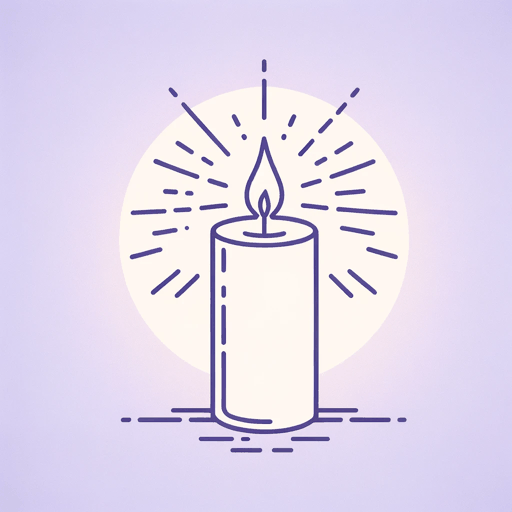31 pages • 1 hour read
Katherine Anne PorterPale Horse, Pale Rider
Fiction | Novella | Adult | Published in 1939A modern alternative to SparkNotes and CliffsNotes, SuperSummary offers high-quality Study Guides with detailed chapter summaries and analysis of major themes, characters, and more.
Summary and Study Guide
Overview
Pale Horse, Pale Rider is a novella written by Katherine Anne Porter. It was published in 1939, along with two other short novellas, Old Mortality and Noon Wine, under the collective title Pale Horse, Pale Rider. The story portrays two young lovers who are tragically affected by the 1918 influenza epidemic, or Spanish Flu.
This guide uses an eBook version of the 2008 Library of America edition.
Plot Summary
Miranda is a young female theater critic who lives in Denver, Colorado. In 1918, American involvement in World War I is increasing, and many young American men are being sent to Europe. One day, Miranda dreams about horse riding. In the dream, she wakes in an unfamiliar bed and saddles her horse. She rides alongside a stranger, viewing the world as though she is her deceased aunt. Miranda wakes from her dream and is immediately thrown back into the difficult problems of reality. She worries how she’ll pay her bills and, especially, about a duo of men who come to her office and intimidate her. They want her to buy Liberty Bonds, a type of war bond in which US citizens lent money to the government to fund the military during World War I.
Still thinking about her dream, Miranda goes to her office at the newspaper, where she works hard as the theater critic and, as a result, feels continually exhausted. Her colleagues include Towney, a young woman who writes the local gossip column, and Chuck, the sports reporter, who can’t be drafted for the war due to his medical history. Miranda and Towney have a strong bond. They once declined to report on a salacious story about an elopement when the young girl involved asked them not to ruin her reputation; after another newspaper published the story anyway, the two female reporters were demoted to less prestigious roles. Their new roles are more traditionally reserved for women. Like Miranda, Towney has been targeted by the Liberty Bonds salesmen and worries that she won’t be able to afford a bond. Miranda comforts her. Both women have been trying to help the war effort, though Miranda’s visits to the barracks where the injured soldiers recuperate have been chastening. Miranda has begun to resent the war. She’s tired of making meaningless gestures that accomplish nothing.
Miranda met a handsome young soldier named Adam 10 days earlier. During those 10 days, they’ve gone out many times. They stay up late, dancing and drinking coffee. Adam is currently on leave due to rumors of a terrible disease spreading to US soldiers in Europe. During Adam and Miranda’s walks, they pass many funerals. Adam has a wry view of his survival chances in the war. Miranda notes his pessimism, but they quietly agree not to mention the horrors of the war while they’re together.
Miranda feels increasingly overwhelmed. She’s surrounded by death and destruction at every turn, she worries about her bills, and she’s exhausted. All her time outside the office is spent with Adam, and she doesn’t know how long she’ll have to be with him. She worries about growing too attached to someone who’s about to be sent into a hellish war. Increasingly, she senses an impending doom in her life. While she’s attending a vaudeville play with Chuck, an actor whom she gave a negative review accosts her. The actor accuses her of knowing nothing about the theater. Miranda ignores him. Later, she attends a play and goes to dinner with Adam. They drink coffee and dance. Miranda doesn’t mention her increasing certainty that Adam will die in the war.
The next day, Miranda wakes up late. She feels ill, and Adam appears by her bedside. He offers to take care of her. Miranda has an increasingly high fever. Adam stays with her, giving her medicine and food in the small, rented room. She emerges from one of her fever dreams long enough to tell Adam that she loves him. He assures Miranda that he loves her too. They sing a song called “Pale Horse, Pale Rider” as Miranda tries to remain awake. The next day, he visits the shop and—while he’s away—an ambulance arrives and takes Miranda to the hospital. There, her condition worsens, and she flits between consciousness and unconsciousness. She’s read a note from Adam, which explains that he tried to visit but was denied. Miranda slips in and out of intense dreams about death.
Miranda nearly dies in the hospital. During this time, she learns that the war is over, but she feels nothing. She’s nursed back to health and is eventually well enough to open her letters. One of them is a letter from Europe, in which an unknown soldier writes to Miranda to explain that Adam died a month ago of the same flu that nearly killed Miranda. She’s shaken by the news and believes that she should have died instead of him. Nevertheless, she resolves to live her life and pretend that she’s happy even though she feels nothing but a longing to die.
Related Titles
By Katherine Anne Porter




